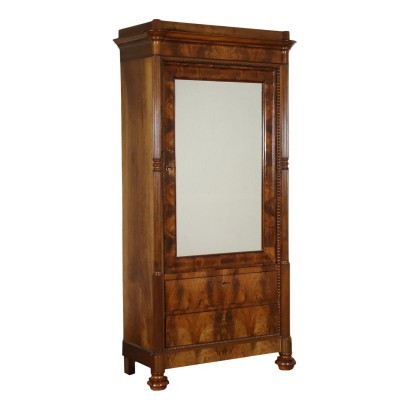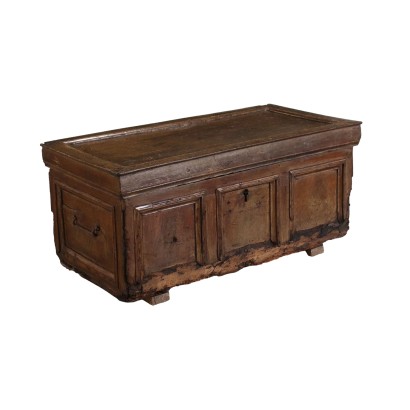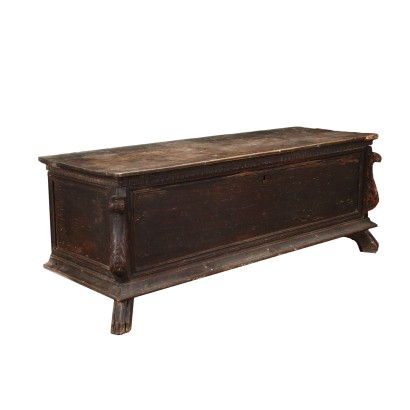Ligurian Charles X Wardrobe Walnut Pine Italy 19th Century
Features
Style: Charles X (1824-1830)
Age: 19th Century / 1801 - 1900
Origin: Liguria, Italy
Main essence: Walnut , Pine
Material: Walnut Feather Banded Veneer
Description
Ligurian Charles X wardrobe supported by frontal refined feet; it has a a pair of drawers surmounted by a door with mirror and framed by grooved half-column shaped pillars that support the top. Walnut feather banded veneered with pine interiors.
Product Condition:
Fair condition. Wear consistent with age and use. Any damage or loss is displayed as completely as possible in the pictures. Product with a Certificate of Authenticity and Lawful Origin.
Dimensions (cm):
Height: 207
Width: 104
Depth: 51
Additional Information
Style: Charles X (1824-1830)
Referring to a very short period, the Charles X style denomination is nonetheless significant because it allows us to detect some specific elements of the taste of the time.
nIt can be considered the last phase of the stylistic research of the Restoration, in which bourgeois requests and needs are welcomed, and opens up to a taste for the Gothic.
nCharacterized by wavy and wavy lines, which oppose the more squared ones of the Empire, it mainly uses light woods with darker threads and very few metal applications.
Age: 19th Century / 1801 - 1900
19th Century / 1801 - 1900 Main essence:
Walnut
Walnut wood comes from the plant whose botanical name is juglans regia , probably originally from the East but very common in Europe. Light or dark brown in color, it is a hard wood with a beautiful grain, widely used in antique furniture. It was the main essence in Italy throughout the Renaissance and later had a good diffusion in Europe, especially in England, until the advent of mahogany. It was used for solid wood furniture and sometimes carvings and inlays, its only big limitation is that it suffers a lot from woodworm. In France it was widely used more than anything else in the provinces. In the second half of the eighteenth century its use decreased significantly because mahogany and other exotic woods were preferred.
Pine
The term pine wood indicates the essence from various species of conifers, especially Scots pine, maritime pine and pinea pine. Used since ancient times for the most common furniture, with the advent of the veneer technique, in the 1600s, it was widely used in the construction of the structure of even luxury furniture, which were then covered, decorated (in Venice) or gilded ( in England). It has a color that varies from white to yellow with reddish hues and can be both very soft and very hard.
Material: Walnut Feather Banded Veneer


























